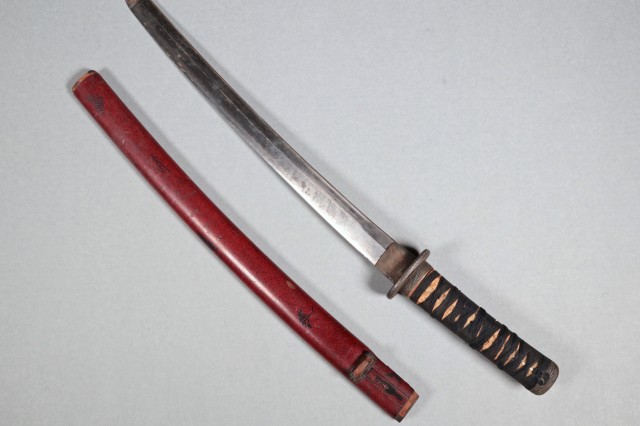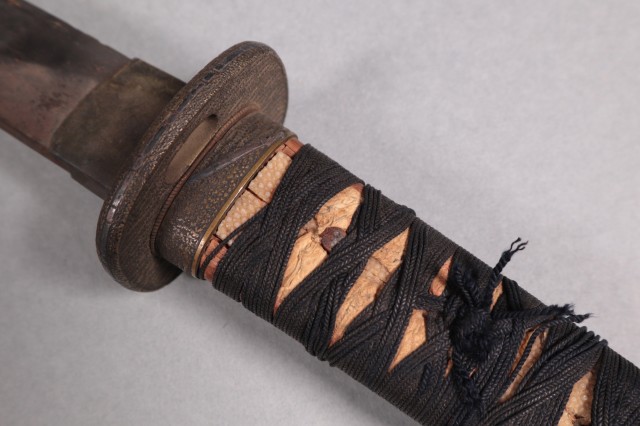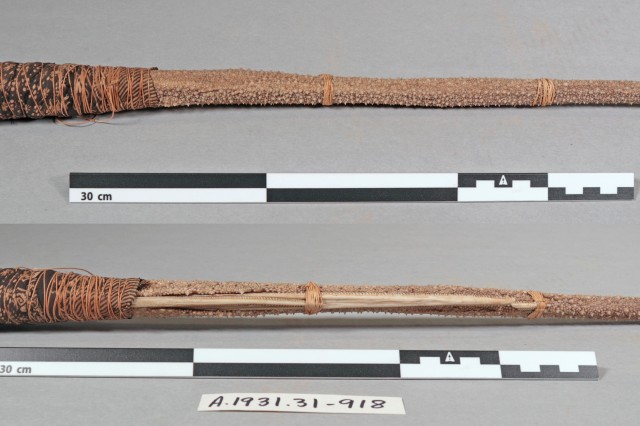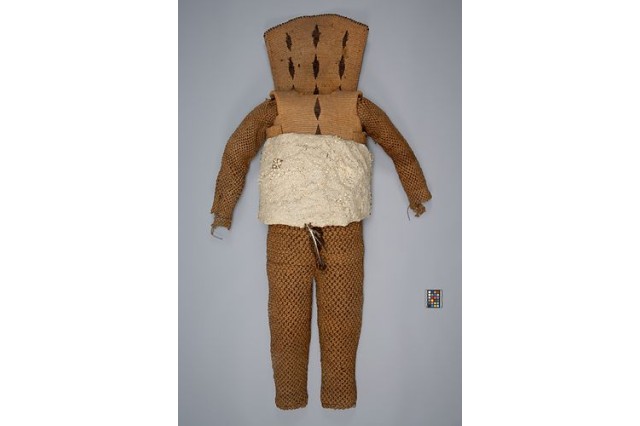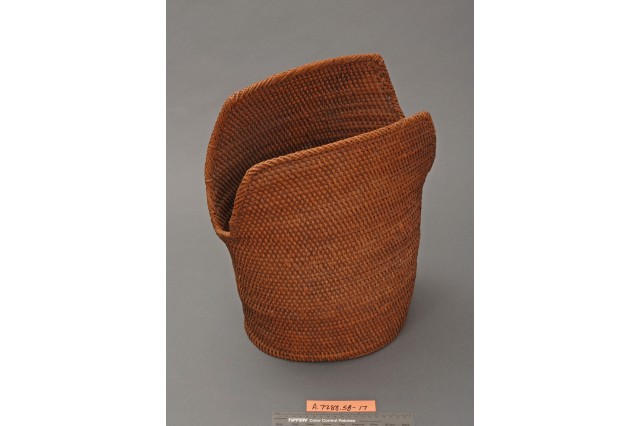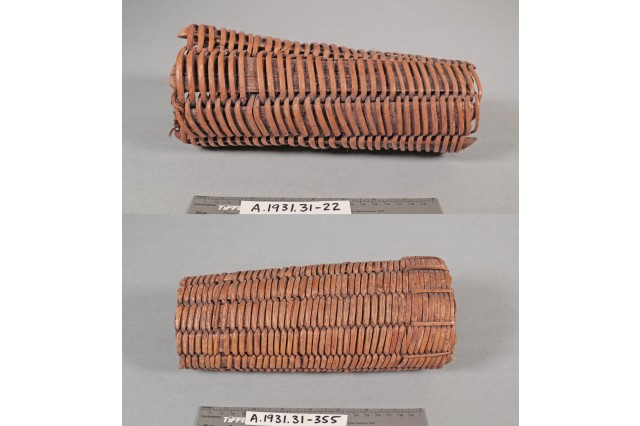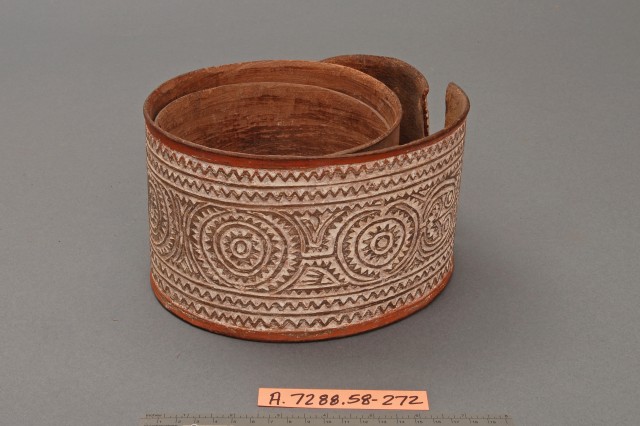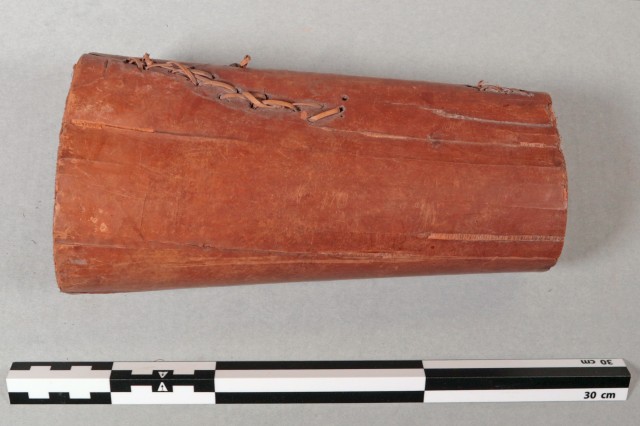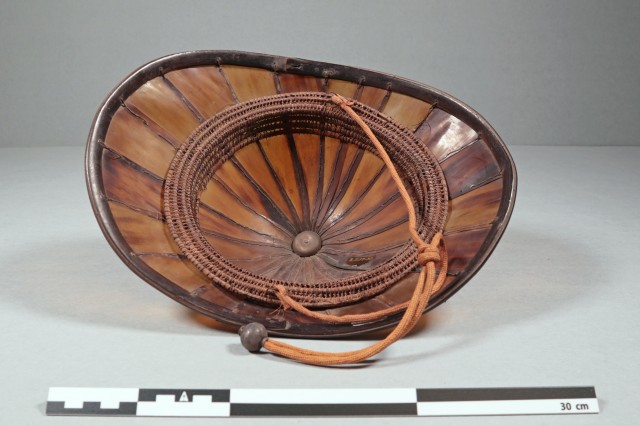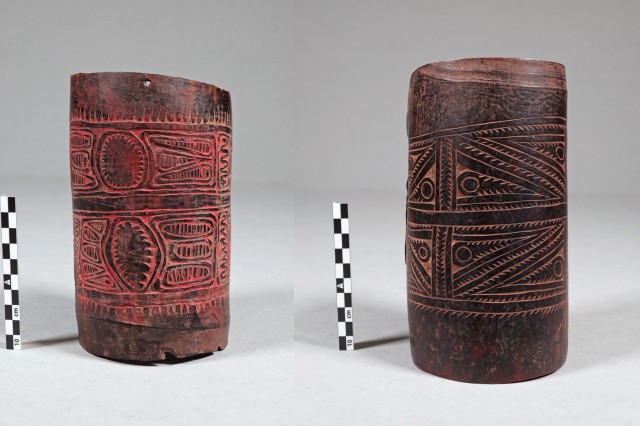Alternative Armor
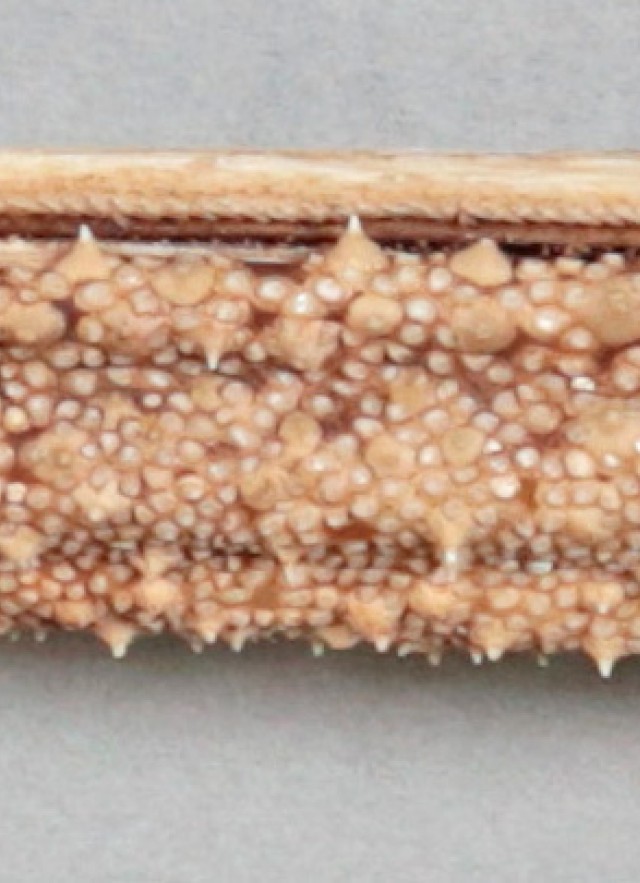
The “knight in shining armor” is a notion popularized through folklore and historical events of a European origin and therefore represents only a portion of what people around the world envision when they think of an armed warrior. The idea of armor as protective covering for bodies and/or objects actually allows for quite a bit of interpretation and is remarkably diverse among various cultures. This is especially true when options are constrained to what is accessible in the surrounding environment. The following examples from NHM's Ethnology collections introduce an array of alternatives to metal plates and demonstrate remarkable skill and ingenuity in their fabrication.
Stingray Skin
An extraordinary source material for armor in the Far East and Oceanic region is stingray skin. Japan was probably the first observed by outsiders to use the skins to armor their weapons but it was the southern Oceanic islands that extended the use of the skins to their protective clothing.
Preparing the skin for use is labor intensive. Unprepared, it is smelly and dirty so the surface must be scrubbed with wire brushes to remove excess accumulations and the underside must be scraped to remove any remaining flesh. It is then bleached to render an almost white, pearly result that has a luxurious appeal.
Rattan
It seems unlikely that a woven plant could be considered strong enough for use as armor but the following examples beg to differ. Rattan, a general name for many different types of climbing palm, is a lightweight, durable material that can be made flexible for weaving into a variety of shapes without splintering. It has been used by many peoples to make furniture and baskets but in New Guinea, it’s also been used to make battle armor.
Bark
Thick sections of tree bark can be manipulated into shapes using hot water or steam to construct protective armor. This was done to create defensive belts and armbands in parts of Southeast Asia and Oceania. As an added feature, the surface of the bark could be painted or carved with geometric patterns, or decorated with designs meant to appeal to the protective powers of the ancestors.
Turtle & Tortoise Shell
As close observers of their surrounding environments, it would seem that indigenous groups of Southeast Asia and Oceania who coexisted with turtles and tortoises for centuries would try to emulate the protection the carapace provides the animal by using the shells to protect a human body as well. However, few examples of turtle or tortoise shell armor exist in these regions which probably has more to do with the reverence people held for these animals. Turtle and tortoise meat was usually reserved for high ranking individuals and therefore their shells became associated with wealth and status. Still, a few examples do exist and these are some of the more beautiful specimens that a person can wear for protection.
